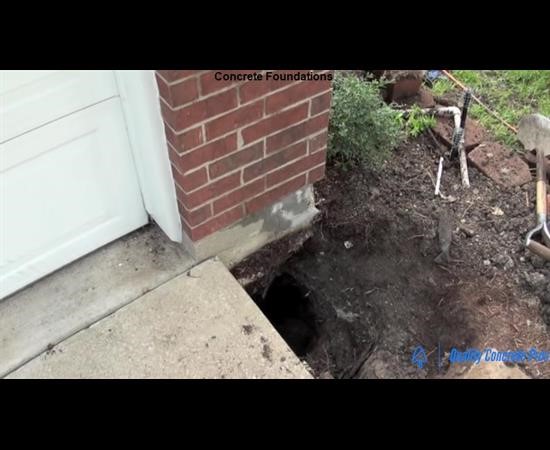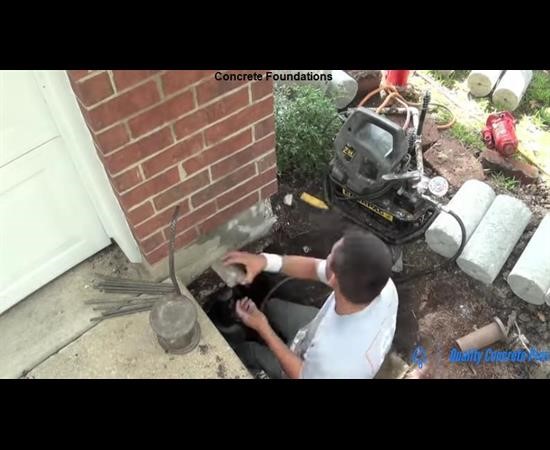
Concrete foundations are one the most durable and cost-effective building materials. Concrete foundations are strong and stable and can withstand unnatural soil changes. Additionally, concrete walls are extremely stable and prevent movement of the home. Concrete is the best building material because of these qualities. Watch videos from MT Copeland to learn how to build a concrete foundation.
Concrete foundations are not susceptible to decay or rot, unlike block foundations. Concrete foundations last longer than block foundations. They also require little or no maintenance. And, unlike block foundations, you don't need to hire a specialist to take care of warranty issues. If you want to build a foundation yourself, you can use a guide that explains every step in the process.
The most common type of concrete foundation is a slab-on-grade foundation. This method uses one layer of concrete, usually a few inches thick. It sits on crushed gravel to allow for drainage and is often reinforced with reinforced rods. For added strength, it can be reinforced with wire mesh. This foundation can also withstand freezing conditions.
Residential concrete foundation walls typically measure six to ten inches thick. Their compressive strength ranges from 2,500 to 3,000 psi. Concrete can also be made with 60,000 psi (Grade 60).
A slab foundation can last over 100 years if it is constructed correctly. There are some disadvantages to this type of foundation, however. For example, it doesn't provide additional living space and can be vulnerable to cracking from high humidity and freezing temperatures. In addition, it can be susceptible to shifting soil.
In order to build a strong monolithic slab foundation, a minimum depth of four to six inches is required. However, this depth is determined by the building code officials. In warm climates, a shallow trench is sufficient, while in climates prone to frost heaving, a deeper trench is required.
Concrete slab foundations have several benefits. They do not require basements or crawlspaces. This type of foundation is also more energy efficient and requires less maintenance. Concrete is poured in one part and reinforced with steel rods (called rebar). The house is then built upon top of it. A slab foundation is also less susceptible to cracks.
For most residential structures, a slab foundation must be at least four inches thick. The slab foundation should be at least four inches thick. The floor slab should be at least four inches thick. The concrete should have a minimum strength of two thousand pounds per square inch. The slab may have additional structural reinforcement, such as fiber mesh reinforcement, in order to resist shrinkage.

There are several types of slabs. There are many types of slabs. Some are simple and others are more complex. The requirements of your building will determine which type you choose. Which slab you choose will depend on the load you have to carry. A reinforced curved arch slab would be a good example. This type is used for bridges, tunnels and buildings.
There are 16 different types of concrete slabs. Some are cast in situ, while others can be precast. In either case, there are pros and cons to each. The most common type of slab is flat. This type is suited for commercial buildings and parking lots. It is also an excellent choice for kitchen slabs.
The reinforced flat slab is another type of slab. This type of slab is commonly used when the span is less than 9m and the live load is 4-7KN/m2. This slab requires more formwork than a flatplate. It is best suited for buildings with spans between 6 and 9m and live loads between 4 to 7 KN/m2. It is not recommended for high-rise buildings but it is great for parking lots and other places that have strict height controls. It is often used in hotels and commercial buildings where aesthetics are important.
The majority of homes in the United States are built on slabs. Slab homes tend to be healthier and more affordable than homes built on conventional foundations. The slabs also allow more sunlight to penetrate through windows, which is important in cold climates.
It is important to prepare the soil before pouring a foundation. This includes digging out the foundation area and placing outer form boards to help hold the shape of the slab. Sandbags are also helpful for holding the form boards down, which can be reused in future builds.
A good foundation is essential for a strong home. It will help distribute the weight of the structure and prevent the subsoil from spreading or facing unequal settlement. Cracks in walls can develop if there are no foundations. To prevent this, double check your measurements and make sure you and your contractors are working off the same set of plans.
Next, prepare the area to be concrete poured. The area should be dug out to a depth of six to eight inches. Once the area is prepared, you can place the rebar that meets the building code requirements. Next, pour concrete into the trench. Smoothen the surface.
You'll need to obtain permits for the project. Your contractor and crew should meet you to discuss the project details and any other details before you break ground. To avoid any misunderstandings later, you will want to ensure you fully understand the terms and conditions. Obtaining these permits should be factored into the total cost of the foundation project.
A solid foundation is essential for a house to support its weight. A foundation not only supports the weight of the house, but also protects it from other forces. Without a foundation, a building could easily collapse under the weight of the roof, walls, and windows. Foundations must also withstand environmental forces such as earthquakes and snow. A foundation that is unstable could lead to cracks or moisture damage.
There are many foundations available, but the best one for you is the one that suits your home. The first step in choosing a foundation is to determine what material you want to use. For residential properties, concrete or wood are excellent choices. A wood foundation is not as sturdy as a concrete one, but it is the most environmentally friendly. Concrete foundations are usually more expensive, but they are durable.
Besides soil type, climate also plays an important role in determining the foundation type. Concrete slabs, for example, are not recommended in very cold climates. Concrete slabs can crack from freezing and thawing. Wooden foundations can also be a breeding ground for termites, so it is important that you consider the climate before selecting a foundation type.
Post and beam construction was used in the past to build houses. This required small concrete piers to support the upright beams and posts that raised the floor. This is a simple solution but not always feasible, especially for room extensions. Many homeowners opt to build without a foundation. A conservatory is another option that doesn't need a foundation. Flagstones serve as an alternative foundation, which could be a good choice for those who don't want to invest in the construction process.
The slab foundation is the most popular type of foundation. This is a cement slab that goes underneath the floor of the home. It is the least expensive type of foundation and is often used in new construction homes. However, it can be prone to settling and moving. This type of foundation is commonly referred to as a "slab foundation" because it is very simple.
Another type of foundation is the block and base foundation. This type of foundation is also the oldest and is often used in older farmhouses. These homes are common in rural areas and were built in the 1920s. The main difference between a base foundation and a block foundation is that a block foundation has one larger block buried in ground. Smaller blocks on top are typically made of wood or stone.
Portland cement is used to build a typical residential foundation wall. There are many types of cement, but the most common type is Type I cement. It is commonly used in basements, slabs on grade, and crawlspaces. This type of foundation wall is often built according to the local residential building code.
There are several types of basements, but the most common type is a slab on grade. The slab on grade technique is not as common as it was back then, so this technique has not been used as much. Crawl space foundations are typically not covered and are not enclosed like a basement. As a result, they tend to be less expensive than full basements, but they don't provide much protection from inclement weather.
Contact Us Today For a Free Estimate!